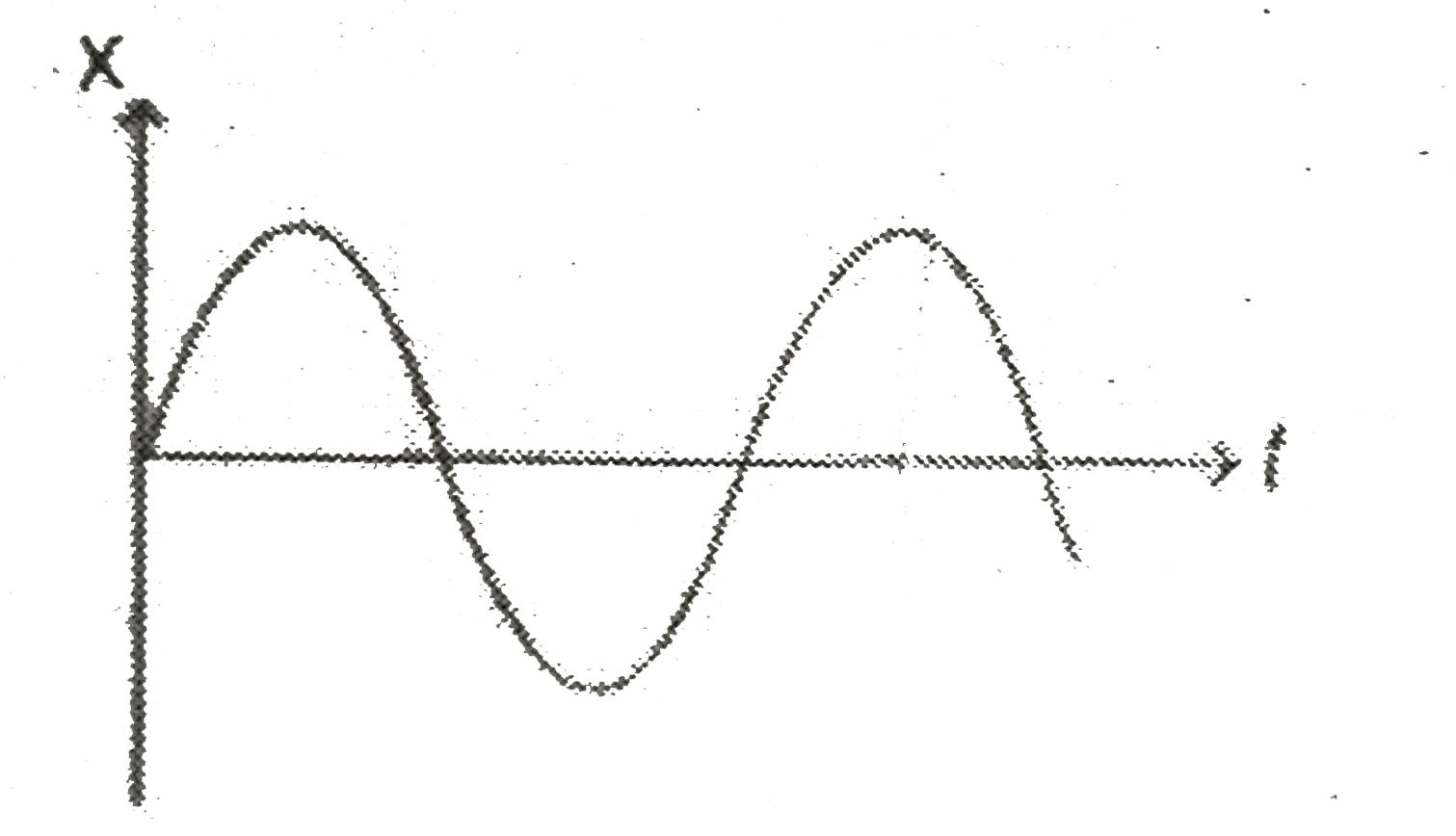The displacement-time equation of a particle executing SHM is . At tme t=0 position of the particle is x= and it is moving along negative x-direction. Then the angle can be
The correct Answer is:D
To find the angle ϕ in the displacement-time equation of a particle executing Simple Harmonic Motion (SHM), we start with the given equation:
x=A−Asin(ωt+ϕ)
At time t=0, the position of the particle is given as x=A2. Therefore, we can substitute t=0 into the equation:
A2=A−Asin(ϕ)
Now, we can simplify this equation:
1. Rearranging the equation gives:
Asin(ϕ)=A−A2
2. Simplifying the right side:
Asin(ϕ)=A2
3. Dividing both sides by A (assuming A≠0):
sin(ϕ)=12
The sine function equals 12 at two angles in the range of 0 to 360 degrees: 30∘ and 150∘.
Next, we need to determine which of these angles is valid given the condition that the particle is moving in the negative x-direction.
4. Since the particle is at x=A2 and moving towards the mean position (which is at x=0), it must be in the second quadrant (where the sine is positive and the cosine is negative). Therefore, the angle ϕ must be:
ϕ=180∘−30∘=150∘
Thus, the angle ϕ can be expressed in radians as:
ϕ=5π6
So the final answer is:
ϕ=150∘ or 5π6 radians
Asin(ϕ)=A−A2
Asin(ϕ)=A2
sin(ϕ)=12
ϕ=180∘−30∘=150∘
ϕ=5π6
ϕ=150∘ or 5π6 radians
Topper's Solved these Questions
- SIMPLE HARMONIC MOTIONBook:DC PANDEY ENGLISHChapter:SIMPLE HARMONIC MOTIONExercise:More than one option is correct
Explore 50 Videos
- SIMPLE HARMONIC MOTIONBook:DC PANDEY ENGLISHChapter:SIMPLE HARMONIC MOTIONExercise:Comprehension types
Explore 18 Videos
- SIMPLE HARMONIC MOTIONBook:DC PANDEY ENGLISHChapter:SIMPLE HARMONIC MOTIONExercise:Only one question is correct
Explore 48 Videos
- SEMICONDUCTORS AND ELECTRONIC DEVICESBook:DC PANDEY ENGLISHChapter:SEMICONDUCTORS AND ELECTRONIC DEVICESExercise:More than One Option is Correct
Explore 3 Videos
- SOLVD PAPERS 2017 NEET, AIIMS & JIPMERBook:DC PANDEY ENGLISHChapter:SOLVD PAPERS 2017 NEET, AIIMS & JIPMERExercise:Solved paper 2018(JIPMER)
Explore 38 Videos
Similar Questions
Displacement-time equation of a particle execution SHM is x=A sin(ωt+π6)
Time taken by the particle to go directly from
x=−A2→x=+A2is
View SolutionDisplacement-time graph of a particle executing SHM is as shown

The corresponding force-time graph of the particle can be
View Solutionx−t equation of a particle executing SHM is
x=Acos(ωt−45∘)
Find the point from where particle starts its journey and the direction of its initial velocity.
View SolutionThe displacement of a particle executing SHM is given by y=0.25 sin(200t) cm . The maximum speed of the particle is
View SolutionThe time period of a particle executing SHM is T. After a time T/6 after it passes its mean position, then att=0 its :
View SolutionA particle executes simple harmonic motion of amplitude A along the X-axis. At t=0 the position of the particle is x=A2 and it moves along the positive x-direction. Find the phase constant δ if the equation is written as x=Asin(ωt+δ)
View SolutionA particle executes simple harmonic motion of amplitude A along the x - axis. At t=0, the position of the particle is x=A2 and it moves along the positive x - direction. Find the phase constant δ, if of the equation is written as x=Asin(ωt+δ).
View SolutionVariation of acceleration a of a particle executing SHM with displacement x is
View SolutionThe displacement of a particle executing SHM is given by
y=0.5 sin100t cm . The maximum speed of the particle is
View SolutionDisplacement-time equation of a particle executing SHM is x=4sin(ωt)+3sin(ωt+π/3)
Here, x is in cm and t ini sec. The amplitude of oscillation of the particle is approximately.
View Solution